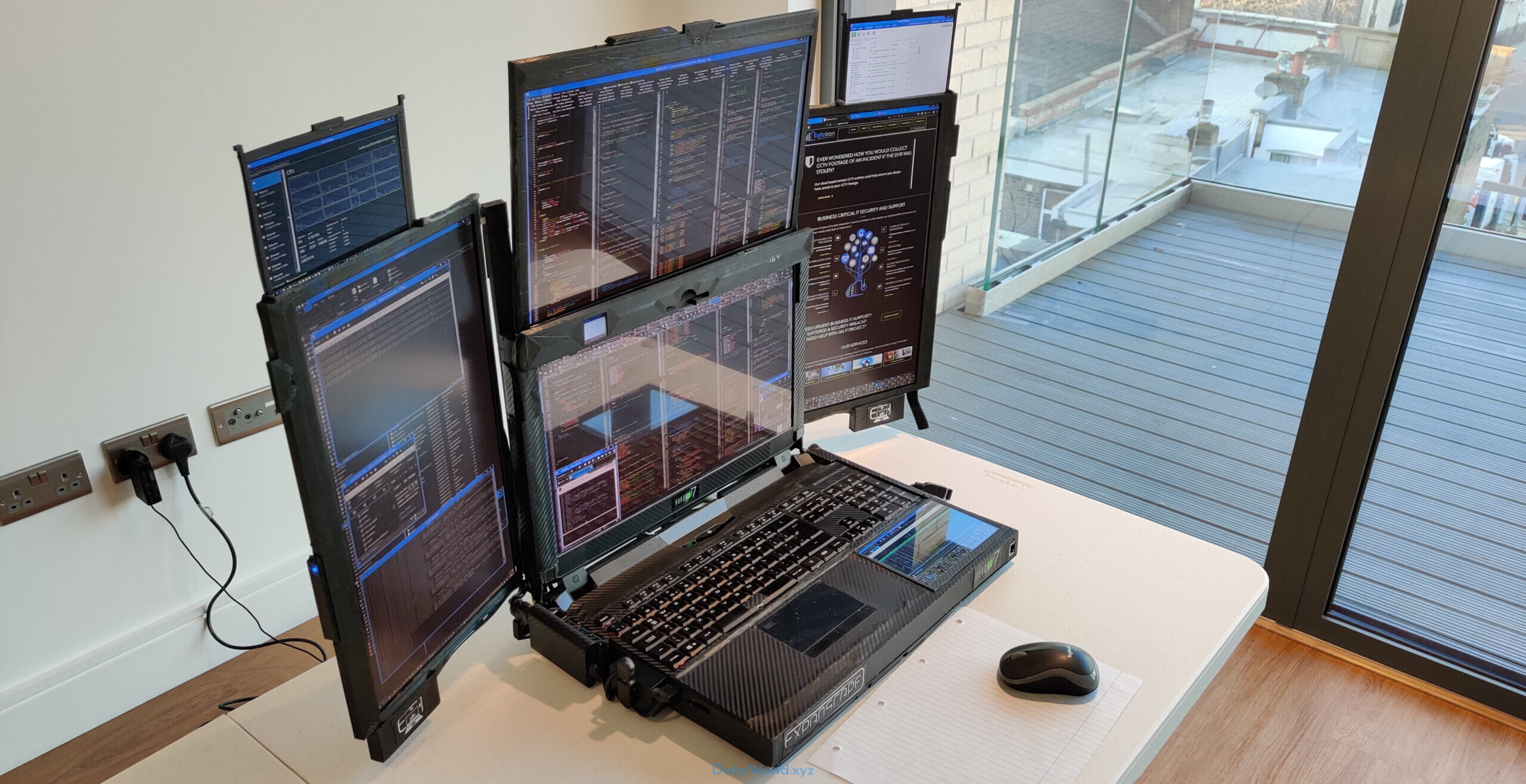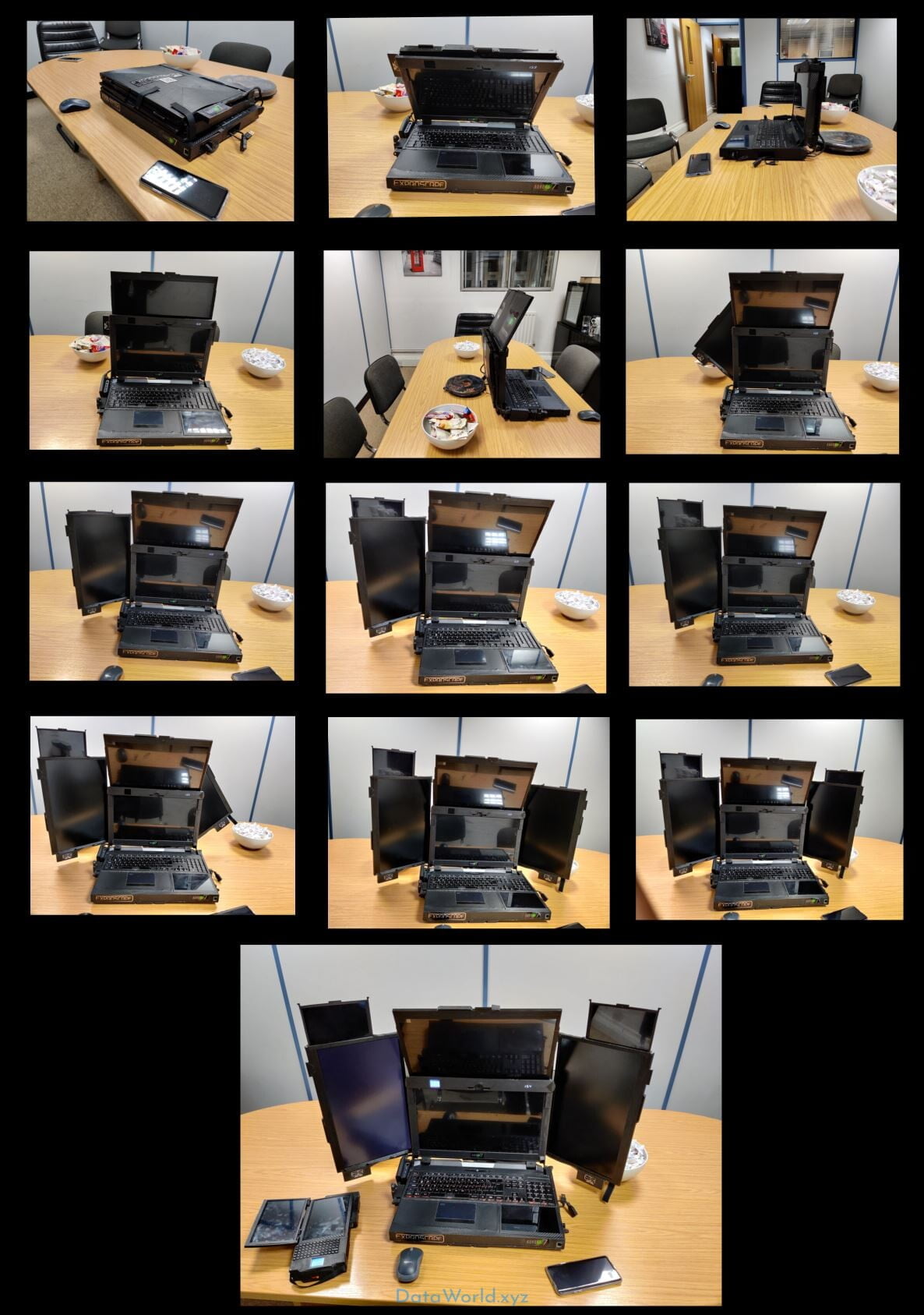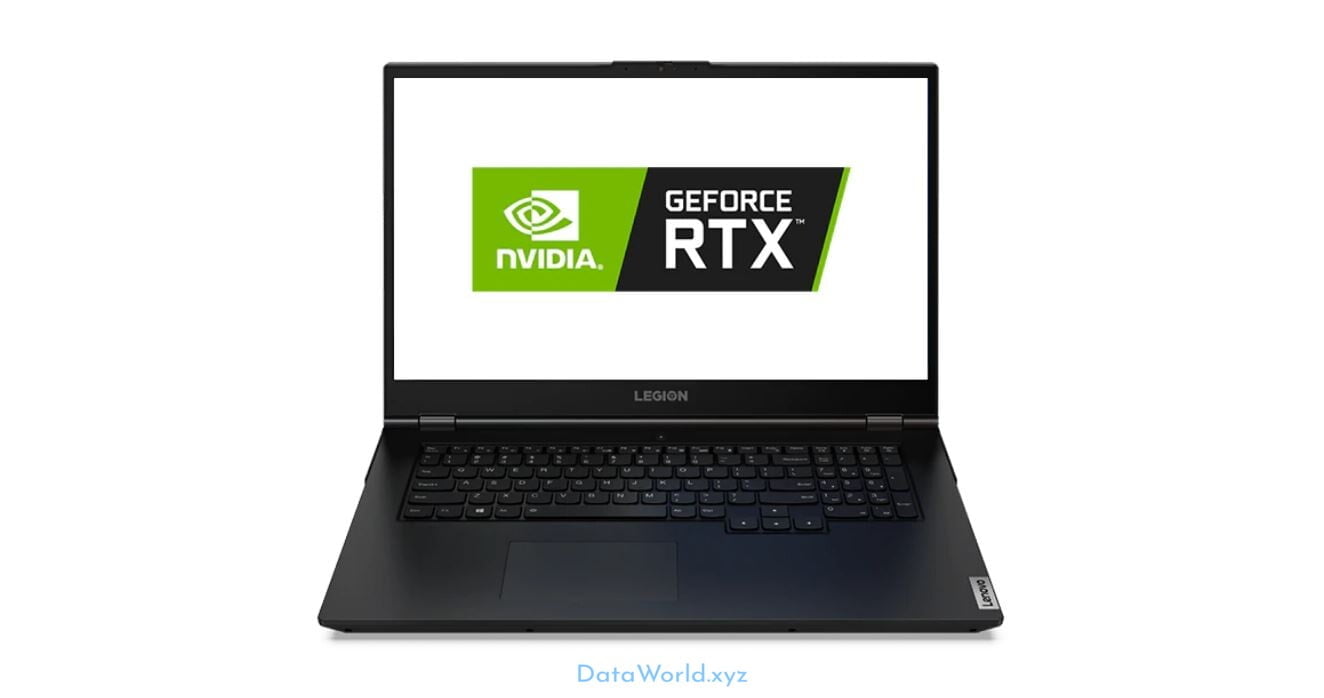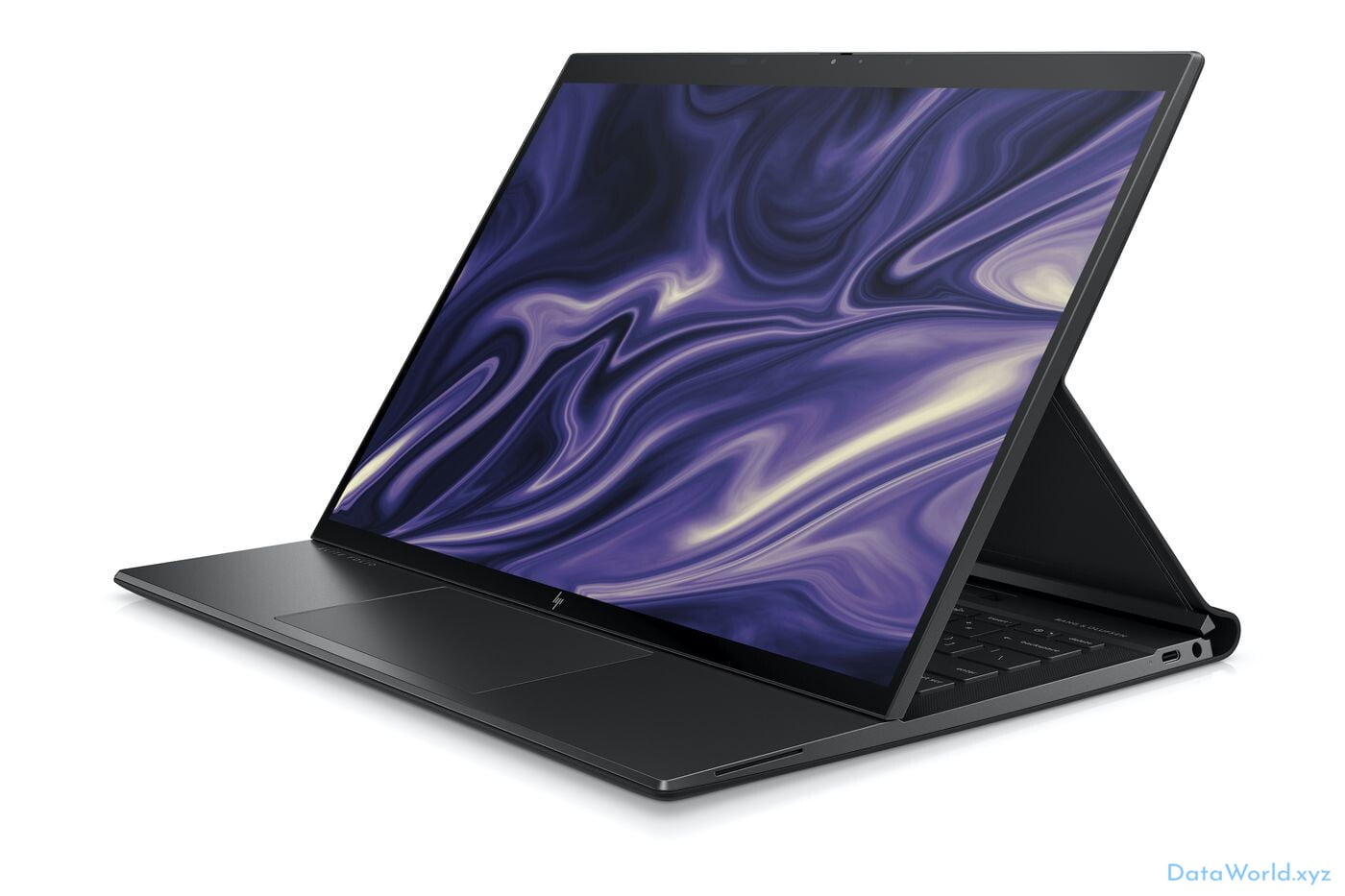
Expanscape Aurora 7 Prototype
Expanscape Aurora 7 Prototype
Prototype Objective Summary:
Very simple 🙂 – Design and build a proper mobile Security Operations Center.
I always knew this would be an ambitious undertaking. Power considerations, structural rigidity, actual portability and the ability to be easily and quickly compactible were priorities. For a further break down of the objectives please read on.
Prototype Objective Breakdown and Achievement percentage:
This is a breakdown of the objectives. It also shows how much of the objective in percentage was achieved with the Aurora 7 Prototype.
- 7 Screens – 100%
- 6 Cores or more at 5GHZ capability
- Fully integrated Multi Touch Screen in Palm rest – 100%
- 4 x 17.3 UHD/4K Screens 100%
- Ability to easily replace parts – 70%
- Ability to swap wiring and parts with easily attainable parts – 70%
- Rechargeable battery system fully self contained – 90%
- Easily Replaceable batteries – 70%
- Weight 10KG MAX – 60%
- NVIDIA GTX 10 Series Graphics – 100%
- Separate Programmable System Monitor LCD – 100%
- User/Arduino accessible Embedded Microcontroller. – 100%
- 4 internal NICs – 75%
- 2 Wireless NICs – 100%
- Ability to fold down compactly to facilitate travel – 100%
- Full NO-NONSENSE 104 Key tactile backlit Keyboard. – 100%
- Overall Structural Rigidity – 80%
- Overall Reliability – 100%
- Everything folds or swivels out of the primary chassis (NO appendages) – 100%
- 10GB NIC – 50%
- Out of band always visible battery gauge – 100%
- 128GB RAM Potential – 100%
- More than 16TB SSD Storage potential – 100%
We recently reported about Expanscape, a startup developing battlestation laptops featuring up to seven displays and offering their prototypes to interested parties at undisclosed prices. Today we can share some more information about pricing, which tops out at an eye-popping $20,692 (after conversion) for the seven-screen model’s base configuration that’s powered by an AMD Ryzen 5950X processor paired with Nvidia RTX 3070 (8GB) GPUs.
Expanscape’s Aurora laptops with five or seven screens are a work in progress, so every unit is unique to a large degree. The manufacturer says that it is getting closer to finalized pricing for its A7 prototype as it had standardized on specific hardware, but until now, the company hasn’t announced official prices of its multi-monitor laptops.
Expanscape currently has two types of laptop prototypes in three configurations. The ‘basic’ Aurora A5 notebook comes with five monitors: four 15.6-inch 4K displays and one 7-inch touchscreen integrated into its palm rest. This system packs an eight-core AMD Ryzen 7 4800U processor paired with 64GB of DDR4 memory, a 2TB PCIe/NVMe SSD, and a 2TB SATA SSD. This entry-level machine currently costs approximately £4,500, or $6,286 USD after conversion.
The ‘full’ Aurora A7 laptops are equipped with seven displays and come in two configurations powered by an AMD Ryzen 5950X processor paired with Nvidia RTX 3070 (8GB) GPUs. One model features four 17.3-inch 4K monitors, two 9.7-inch 1536p monitors, and one 7-inch touchscreen. Another does not have the 7-inch touchscreen but comes with a 17.3-inch touch-enabled LCD in its base to replace the keyboard, which now extends from under the chassis.
Expanscape’s Aurora A7 notebooks with seven screens are naturally more expensive than their smaller A5 brethren. At present, these machines cost £15,000 ($20,952 USD after conversion) for a standard model, but the pricing goes up with all of the customizations required for the professional built-to-order systems. All Aurora A7 machines come equipped with 128GB of DDR4 memory as well as 8TB of PCIe/NVMe and SATA storage.
Both the A7 and A5 models come with internal 8 megapixel cameras with triple LED lighting and have dedicated hardware switches that can disable the cameras, microphone, speakers and wireless features.

The Aurora 7 Prototype (Actual Specs):
| Attribute | Value | Additional info |
| Compute | ||
| Processor | Intel i9 9900K, LGA 1151
(8 core, 16 thread, 16M Cache) |
Multithreading can be disabled to help with Meltdown and Spectre. |
| Ram | 64GB DDR4 2666MHz | Overclocked to 2933 and tested (stable) |
| Chipset | Z170 | System modified to be compatible with i9 9900K (z170 is not compatible with i9900k by default – we achieved compatibility via a mod) |
| Graphics and GPU Compute | ||
| GPU | NVIDIA GTX 1060 Series | Very moderate power consumption |
| Storage | We mostly work with MLC based SSDs for reasons of MTBF. |
|
| M.2 slot 1 | 1 TB NVMe MLC SSD (With Heatsink) | PCIe GEN 3.0 |
| M.2 slot 2 | 0.5 TB NVMe MLC SSD (With Heatsink) | PCIe GEN 3.0 |
| 2.5 Sata slot 1 | 2 TB 7200rpm | Serial ATA revision 3 |
| 2.5 SATA slot 2 | 1 TB MLC SSD | Serial ATA revision 3 |
| RAID | Available | Striped and mirrored options tested |
| Displays 2 and 3 – Portrait | ||
| Size | 17.3 inches (Diagonal) | |
| Type | WLED, AHVA | |
| Resolution | 3840×2160 | |
| Aspect Ratio | 9:16 | |
| Brightness | 400 cd/m2 (Typical) | |
| Contrast Ratio | 1000:1 (Typical) | |
| Colours | 16.7M (100% Adobe RGB) | |
| Refresh Rate | 60Hz | |
| Displays 1 and 4 – Landscape | ||
| Size | 17.3 inches (Diagonal) | |
| Type | WLED, AAS | |
| Resolution | 3840×2160 | |
| Aspect Ratio | 16:9 | |
| Brightness | 300 cd/m2 (Typical) | |
| Contrast Ratio | 800:1 (Typical) | |
| Colours | 16.7M (100% Adobe RGB) | |
| Refresh Rate | 60Hz | |
| Displays 5, 6 and 7 – Landscape | ||
| Size | 7inch (Diagonal) | |
| Type | WLED LTPS | |
| Resolution | 1920×1200 | |
| Aspect Ratio | 16:10 | |
| Brightness | 450 cd/m2 (Typical) | |
| Contrast Ratio | 1100:1 (Typical) | |
| Colours | 16.7M (72% NTSC) | |
| Refresh Rate | 60Hz | |
| System Status mini display | ||
| Size | 1.44 inch (Diagonal) | |
| Type | Colour LCD TFT | |
| Resolution | 128×128 | |
| Misc mini Display | ||
| Size | 0.7inch | |
| Type | 3 digit numeric LED | |
| Touchscreen in Palm (Display 6) | ||
| MultiTouch enabled | Yes | |
| Concurrent Touch Points supported | 5 | |
| Touch/Track Pad | ||
| Multitouch | Yes | |
| Integrated Fingerprint Reader | Yes | |
| Physical buttons | 2 | |
| Webcam | ||
| Resolution | 2MP | |
| Audio | ||
| Built-in Stereo speakers | Yes | |
| Built-in Subwoofer | Yes | |
| Built-in Microphone | Yes | |
| Intel Audio | Yes | |
| Optical in/out | Yes | |
| Line Out | Yes | |
| Line in | Yes | |
| Separate Headphone Jack | Yes | |
| Wireless | ||
| Internal wireless adapters | 2 | |
| Internal bluetooth modules | 1 | |
| Standards supported by wireless 1 | 802.11 ac | |
| Standards supported by wireless 2 | 802.11 ac | |
| Bluetooth standard supported by the internal bluetooth module | 4.2 | |
| NICs | ||
| Internal Gigabit NICs | 3 | |
| USB ports | ||
| USB 3.1 Gen1 ports | 3 | |
| Available Thunderbolt ports | 1 | With modification |
| Embedded Microcontroller | ||
| Type | ESP32 | |
| MPU | 9250 | |
| Wireless Protocol support | 802.11 b/g/n/e/i, Bluetooth | ESP32 Wireless ability currently disabled due to CVE-2019-12586.
This will be corrected with a different module on the next A7 prototype. |
| Spare Video Out | ||
| HDMI | 1 (HDMI Version 2, 4K) | With modification |
| Battery System | ||
| Primary internal battery | 82Wh | |
| Secondary internal battery (For Screens) | 148Wh | Cannot currently take system on a plane. This will be corrected with a lower rated battery on next prototype. |
| Battery life Screens ONLY (Uses Secondary Battery) | 2hrs 20mins | Note Primary internal battery can be swapped to add more time up to a total of 2hrs 20mins |
| Battery life – System and Screen – 9900K@2GHz (Using Primary Battery for system and Secondary battery for screens) | 1 hour | |
| Battery life – System and Screen – 9900K@3GHz (Using Primary Battery for system and Secondary battery for screens) | 40mins | |
| Battery life – System and Screen – 9900K@4GHz (Using Primary Battery for system and Secondary battery for screens) | 28mins | |
| Power Supply 1 | 19.5V 16.9A | |
| Power Supply 2 | 19V 3.62A | |
| Dimensions – All screens folded down and laptop closed | ||
| Length | 51cm | |
| Width | 34cm | |
| Height | 11cm | |
| Dimensions – All screens opened | ||
| Max Length | 96cm | |
| Max Depth (Screens) | 6cm | |
| Max Height | 59cm | |
| Weight | ||
| Total Weight | Around 12kg – Although this will be confirmed early next week. |





